In March 2021, Nissui began marking its product packaging with its eco mark "Mirai-no Umie" (meaning "For the future ocean"). The purpose of this eco mark is to make Nissui's environmentally-friendly initiatives widely understood and known among customers through the packaging so that they can select environment-friendly products. "Mirai-no Umie" started appearing on new products and updated products released on March 1, 2021.
![[Logo] Mirai-no Umie](/assets/img/site/197/197_336_img-01.svg)
This eco mark was designed in the motif of "∞" (i.e., infinity), symbolizing the circulation of water in forests, rivers and the ocean. The left part of the eco mark represents eco-initiatives, whereas the right part denotes the bountiful sea. The eco mark signifies that environmental friendliness will bring about the ocean's bounty, and in turn, translate into people's healthy and energetic lives and a hopeful future.
All Nissui-branded products are within the scope of being marked with "Mirai-no Umie"; products can bear the eco mark when environmentally-friendly efforts have been made in their containers and packaging. Marking-related environmental friendliness criteria are prescribed in Nissui's "Container/Packaging Selection Guidelines" as well as marking criteria for the "Mirai-no Umie" mark.
The eco mark is displayed on the individual packaging, label, etc. of the product along with a description of their environmental friendliness in concrete terms, such as "plastic usage has been reduced in this tray (xx% less than before)."
![[Figure] Marking Criteria and Example of Presentation (One Example)](/assets/img/site/197/197_336_img-02e.png)
![[Photo] Product Bearing 'Mirai-no Umie' Mark (One Example)](/assets/img/site/197/197_336_img-01.jpg)
In fiscal 2020, Nissui established the Container/Packaging Selection Guidelines, in consideration of the impact of plastics on the global environment, such as the marine plastics problem and global warming. One of the objectives is to reduce the volume of plastics used in containers and packaging to the extent possible, while taking advantage of their roles and functions, including protecting products and maintaining their quality. The Guidelines are applicable to all Nissui-branded products (i.e., frozen prepared foods, surimi-based products, shelf-stable foods, marine products and fine chemical products).
| Description of initiatives | Specific examples | |
|---|---|---|
| Reduce | Suppress the volume of plastics used in containers and packaging (minimization) |
|
| Replace | Adopt plant-derived and recycled materials and replace existing materials with them |
|
| Recycle | Adopt and switch to easy-to-recycle materials |
|
| Other forms of environmental friendliness (other than plastics) |
Pursue environmental friendliness also for materials other than plastics, such as adopting plant-derived ink and paper certified by the Forest Stewardship Council (FSC). |
|
Nissui has prepared a "Container/Packaging Selection Checklist" in accordance with the Guidelines and implements it as part of the product development flow. It serves as a mechanism that enables us to check whether or not appropriate environmental friendliness has been examined in terms of the materials, size, thickness, etc. of containers and packaging.
In Japan, an obligation to recycle waste in the form of “containers” and “packaging” generated from households is imposed on business operators who used, manufactured and/or imported them. Nissui and its group companies in Japan pay a recycling commission to the Japan Containers and Packaging Recycling Association in accordance with the Containers and Packaging Recycling Law (Note), which stipulates the aforementioned obligation.
| FY2020 | FY2021 | FY2022 | |
|---|---|---|---|
| Plastics (t) | 4,374 | 4,456 | 3,939 |
| Paper (t) | 356 | 416 | 627 |
| Glass bottles (t) | 3,122 | 3,476 | 3,176 |
Scope: Nissui Corporation
(Note): This law was created for the purpose of recycling containers and packaging (e.g., glass bottles, PET bottles, paper boxes and film bags for sweets, shopping bags) of products discharged as waste from ordinary households in Japan.
At Nissui, the Plastics Subcommittee and the Container/Packaging Eco-Project play a central role in reviewing the use of plastics in all of its products.
| FY2019 | FY2020 | FY2021 | FY2022 | FY2023 | |
|---|---|---|---|---|---|
| Food Products Business (kg) | 15,630 | 33,465 | 33,814 | 72,830 | 62,610 |
| Marine Products Business (kg) | - | - | - | 23,835 | 45,532 |
In accordance with the Container/Packaging Selection Guidelines, we are reducing the size and thickness of plastic container packaging while ensuring the quality of the products. We are not only focusing on reducing the weight and thickness of existing product forms, but also implementing further measures such as eliminating the use of trays to reduce plastic consumption. These efforts are aimed at maintaining product quality while striving for reduction in plastic packaging.
![[Photo]Obanzai koro koro Series](/assets/img/site/197/197_320_img-01.webp)
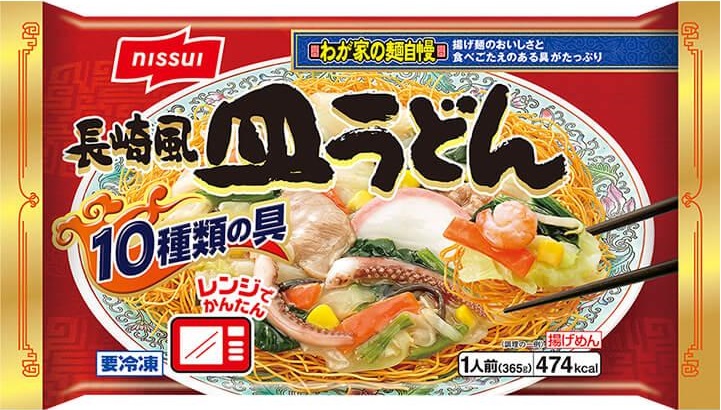
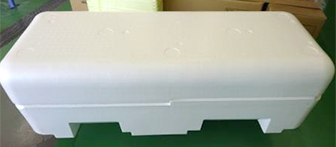
Styrofoam
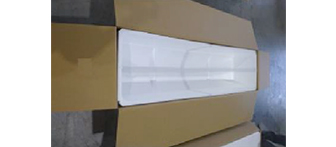
Hybrid type
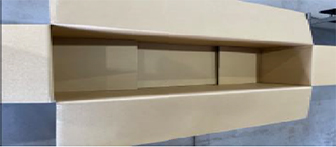
Cardboard box
Aquaculture companies in the Nissui Group in Japan are reviewing the use of expanded polystyrene boxes (fish boxes) for transporting marine products and considering the use of alternative materials.
As an alternative, the use of water-repellent cardboard boxes is being promoted mainly during periods other than summer when the temperature is high.
| Company name | Alternative material | FY2020 | FY2021 |
|---|---|---|---|
| All aquaculture companies in the Nissui Group in Japan | Paper material (highly water-repellent cardboard boxes) (unit: cases) | 42 | 6,907 |
| Paper material + expanded polystyrene (Note) (unit: cases) | 1,610 | 678 |
(Note): This is a material in which cardboard and expanded polystyrene are layered, making it possible to limit the volume of plastics used compared to ordinary expanded polystyrene boxes.
| Company name | Description of business | Results of Initiatives |
|---|---|---|
| Thai Delmar Co., Ltd. (Thailand) |
Frozen food production | Consulted with customers regarding mainstay products and switched to single-box packaging from May 2023, contributing to an annual reduction of 6,200 kg of PP band usage. Additionally, collaborated with suppliers to increase the weight of raw material for one bag from 20 kg to 25 kg, reducing plastic used for inner bags. This is projected to reduce plastic usage by 600 kg annually. |
In many cases, plastic containers and packaging for foods are made by pasting together multiple materials. They vary in size and thinness, as well as the degree of contamination after use. The reality is that these factors make it difficult to recycle food containers and packaging. It is thus important to adopt a recyclable design from the development stage, and in cases where the containers and packaging are recyclable, make it known to consumers in an easy-to-understand manner so that it will lead to collection and recycling after use.
| Company name | Results of Initiatives and Plans/Targets |
|---|---|
| Gorton's, Inc. (USA) | Since 2019, Gorton's, Inc. has started reviewing existing materials and testing recyclable new materials in collaboration with suppliers in relation to two major container and packaging formats in its products (i.e., SURPs (stand-up resealable pouches) and direct-filling containers/packaging). In 2020, Gorton's determined the following targets for containers and packaging of products for retail.[Targets]
In 2021, the results of initiatives related to containers and packaging of products for retail were as follows.
|
| Flatfish Ltd. (UK) | In 2020, Flatfish Ltd. promoted the introduction of plastic containers that can be recycled by consumers in the majority of its products. In 2021, Flatfish will further promote this initiative in accordance with the plan below. [Plans]
In 2021, Flatfish identified the water absorbent pad that accompanies trays as an obstacle to recycling containers and packaging (it is unsuitable for recycling as it is made of different plastic material from the tray). Flatfish developed new trays that no longer require any water absorbent pad and switched to a recyclable design, which translated into a reduction of plastics by 2.9 tons. |
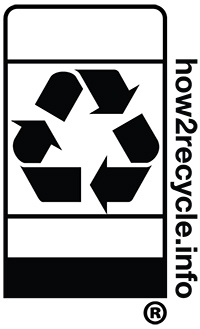
(Note): How2Recycle is a label in USA/Canada indicating whether or not the container/packaging is recyclable. At Gorton's, all laminated pillow bags with zipper already bear this label as of December 2020.
Plastic waste is also generated at both production plants and logistics centers. The Nissui Group has set a target as an environmental indicator for the reduction of plastic emissions in the production and distribution stages in Japan, and is promoting efforts for the achievement of this target. We analyze plastic emissions at the departmental level and are actively working with raw material suppliers to reduce plastic waste.
We have identified the different types of plastic waste and their corresponding weight percentages in the plastic emissions from Nissui's food production plants in Japan. Based on our findings, we determined that packaging derived from raw materials accounts for a large portion of the weight of plastic emissions, which has led us to include them as one of our reduction targets. At all Nissui Group production plants located in Japan, we are considering switching to reusable materials and forms for containers and packaging (bags) used for raw materials. We are also encouraging reuse by replacing these containers and packaging with returnable solutions (for raw materials such as onions, milk and rice).
![[Photo] Before the switch: onions as raw material (plastic bags)](/assets/img/site/197/197_451_img-01.jpg)
Before the switch: onions as raw material (plastic bags)

![[Photo] After the switch: onions as raw material (returnable containers)](/assets/img/site/197/197_451_img-02.jpg)
After the switch: onions as raw material (returnable containers)
Targets for reduction of plastic waste were also examined at logistics centers. In the distribution of marine products, we are promoting the replacement of Styrofoam packaging used in the transportation of fresh tuna with reusable crates. In fiscal year 2023, we transported approximately 600 reusable crates for fresh tuna, accounting for 20% of the total number of shipments.
In addition, with regard to stretch film, which is widely used in logistics to prevent cargo from collapsing, we are actively collaborating with plastic recycling companies to establish a closed-loop recycling (Note) system within the Group throughout Japan. Looking ahead, we will use this closed-loop system to achieve the 100% use of recycled stretch film within the Group in Japan by 2025.
(Note) Closed-loop recycling: The process of recycling and reuse of materials that have traditionally been disposed of as waste, transforming them into valuable resources.
![[Photo] The reusable crate for fresh fish](/assets/img/site/197/197_451_img-03.jpg)
A reusable crate for fresh fish